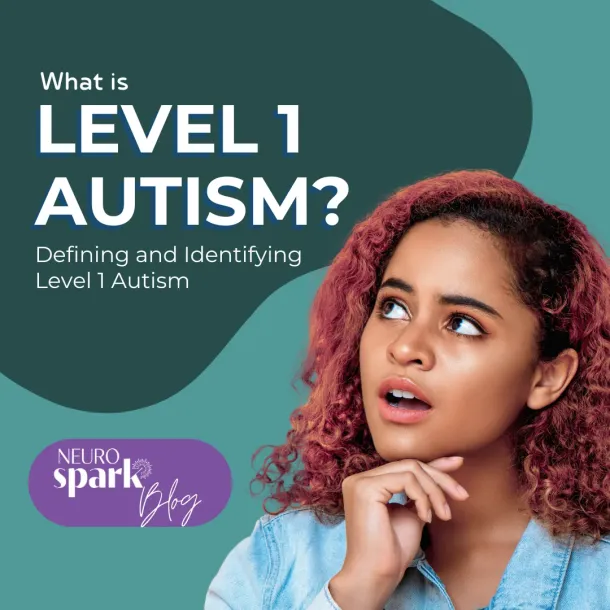6 Signs of High-Masking Autism in Women You’re Missing

Table of Contents:
Note: At NeuroSpark Health, we do not use functioning labels like “high-functioning” or “low-functioning” to describe autism. This article is written to welcome and educate people who are using search engines to look up “high-functioning autism in females.” We’re here to meet you where you are.
High-Masking Autism in Women: Beyond the “High-Functioning” Label
Autism in women is often misunderstood or misdiagnosed, especially when it doesn’t match the traditional male-centered model. Many women, AFAB, and gender-diverse adults learn to mask their autistic traits so well that they’re perceived as “high-functioning,” a label that’s both misleading and invalidating.
So what’s really happening when autistic women appear to “function well” but feel exhausted, anxious, or disconnected inside? It often comes down to high-masking, a learned survival strategy that hides visible autistic traits. This post explores how autism may show up in high-masking women, why the “high-functioning” label is problematic, and how to better support late-identified autistic adults.
What Is “High-Functioning” Autism, and Why Don’t We Use That Term?
The phrase “high-functioning autism” was once used to describe autistic people who appeared to cope independently or communicate effectively. But this language is outdated, stigmatizing, and inaccurate.
- It’s demeaning to those with higher support needs and implies a false hierarchy (“low-functioning” vs. “high-functioning”).
- It invalidates the struggles of those who appear capable but are quietly masking immense effort, anxiety, or burnout.
- It reduces people to how well they “function” in a neurotypical world instead of honoring their full human experience.
Many autistic advocates compare functioning labels to describing people as machines: “This car isn’t functioning.” Humans deserve more than that.
A more accurate term for “high-functioning autism in women” is high-masking autism, which describes the act of concealing traits to fit social expectations. While terms like high or low support needs are somewhat better, they still miss the complexity and nuance of autistic life. The best way to describe an autistic woman is simply to describe her (her strengths, needs, and lived reality) without assigning value judgments.
6 Common Traits of High-Masking Autism in Women
Many autistic women who mask extensively are mislabeled as “high-functioning.” Here are six experiences that often describe their inner world.
1. Social Camouflaging
Many autistic women become skilled social observers, learning to mimic neurotypical behavior to blend in. You might:
- Rehearse conversations ahead of time
- Force eye contact even when it feels uncomfortable
- Mirror tone or gestures to seem “natural”
- Smile or laugh at the “right” time, even when confused
While camouflaging helps you “pass,” it comes at a high emotional cost, often leading to exhaustion, anxiety, or identity loss.
2. Intense Focus and Special Interests
Autistic women often have deep, sustained passions. But when those interests align with socially acceptable topics—like books, animals, or psychology—they’re dismissed as “normal.”
These focused interests often:
- Provide self-regulation and joy
- Are misinterpreted as being “quirky” or “obsessive”
- Offer a refuge from social or sensory overload
Learn more about autistic special interests →
3. Emotional Sensitivity and Deep Empathy
The stereotype that autistic people lack empathy is flat-out wrong. Many high-masking autistic women experience intense empathy and emotional resonance:
- Feeling others’ pain as their own
- Being easily moved or overwhelmed by emotion in media or conversation
- Overextending in caregiving roles and burning out
This depth of feeling often hides behind composure, making it invisible to others. Yet it’s one of the defining traits of autism in women.
4. Difficulty Communicating in Social Settings
Even articulate autistic women may find social communication draining. You might:
- Struggle with small talk or reading tone
- Withdraw or “freeze” in overstimulating groups
- Overthink after social interactions (“Did I say the wrong thing?”)
You may appear socially skilled while privately analyzing every interaction for hours afterward. Supportive autism-informed coaching or therapy can help with unmasking and navigating social fatigue.
5. Sensory Sensitivities
Many women with autism experience intense sensory processing differences, often minimizing them to avoid seeming “dramatic.” You might:
- Avoid certain fabrics, smells, or lighting
- Struggle in noisy or crowded environments
- Rely on stimming (like fidgeting or repetitive movement) in private to cope
Recognizing and honoring sensory needs is key to post-diagnosis healing.
Learn about autism and sensory differences →
6. Burnout from Masking
Masking works until it doesn’t. Over time, constantly suppressing traits can lead to autistic burnout, a state of exhaustion that affects energy, mood, and executive functioning. Signs include:
- Chronic fatigue
- Heightened sensitivity
- Loss of coping skills
- Emotional shutdown
Many late-diagnosed autistic women realize their identity only after burnout forces them to unmask.t.
Read: Signs of autistic burnout in adults →
We Understand Autism in Women Because We’ve Lived It
At NeuroSpark Health, we specialize in autism in women, AFAB, and gender-diverse adults, including those who’ve spent decades masking. Our clinicians are neurodivergent themselves—and many of us have firsthand experience with burnout, masking, and late diagnosis.
We offer:
- Adult autism evaluations (virtual in most U.S. states)
- Post-diagnosis coaching
- Support groups and community resources
Whether you’re still exploring or just beginning to unmask, we’re here to help you understand yourself with clarity and compassion.
Ready to get started? Book a free consultation →
Learn More About High-Masking Autism in Women
If you’ve ever wondered whether traits of “high-functioning” autism in women might describe your own experience, or why the term itself is so controversial, you’re not alone. Below are some of the most common questions we hear about high-masking autism, late diagnosis, and how autism often shows up differently in women and AFAB adults.
Frequently Asked Questions About High-Masking Autism in Women
What does “high-functioning” autism look like in women?
Many autistic women appear socially capable while privately struggling with exhaustion, anxiety, and sensory overwhelm. They often mask autistic traits to fit in, which can make their challenges invisible. This pattern is better understood as high-masking autism, not “high-functioning” autism.
Is high-masking autism the same as “high-functioning” autism?
Not exactly. High-functioning is an outdated term that measures how well someone appears to fit neurotypical expectations. High-masking describes the effort autistic people, especially women, use to hide or manage traits. It’s a survival strategy, not a measure of ability.
Why are women with autism often misdiagnosed?
Autism research has historically focused on boys, leaving women and AFAB individuals overlooked. Many autistic women are first diagnosed with anxiety, depression, or borderline personality disorder before discovering that autism explains the root cause of their lifelong struggles.
What are common autism traits in women?
Common traits include intense empathy, deep focus on special interests, sensory sensitivities, and exhaustion from social interactions. These experiences are often masked, so others may not notice how much effort they require.
How can I get assessed for autism as an adult woman?
At NeuroSpark Health, we offer virtual autism assessments for adults across most U.S. states. Our process is collaborative, affirming, and designed for women and gender-diverse adults who’ve spent years masking or wondering if they might be autistic.

Julie Landry, PsyD, ABPP
One Spark Can Light a Fire
Diagnosis can be the catalyst for significant momentum. It can represent a turning point for your life, where you can move forward equipped with new knowledge about yourself and a new framework to guide you in your journey.
A formal assessment provides an incredible opportunity to gain knowledge about who you are and how you see the world.



